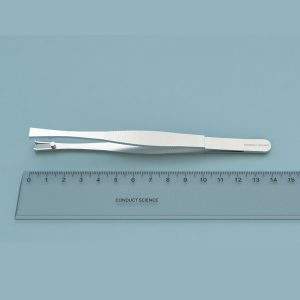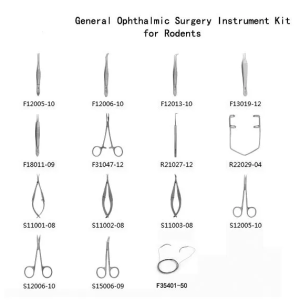Mirror tests are commonly employed in the examination of agonistic interactions, particularly in studies of fish aggression, due to their ability to yield meaningful results with a smaller number of participants while avoiding pseudo-replication. Mirrors elicit a robust aggressive response in the subject without posing any risk of harm. MazeEngineers provides a variety of models for the mirror biting test, reflecting the absence of a clear standard that has emerged from the literature.

MazeEngineers offers custom-built behavioral mazes at no extra cost—designed to fit your exact research needs. Eliminate reproducibility issues from poor sizing or lingering scent cues with precision-engineered, modular, and smart mazes that adapt in real time to animal behavior. Publish new protocols, run adaptive experiments, and push the boundaries of behavioral science.



Features |
Tank: 20×15×20cm (length×width×depth) |

The mirror biting test serves as a versatile and widely applicable paradigm for evaluating the aggression displayed by various fish species towards both interspecific and intraspecific opponents. This test apparatus is instrumental in assessing a broad spectrum of behavioral responses in fish, encompassing overt aggression, restrained hostility, distant aggressive displays, and the time spent close to the intruder. It also facilitates the study and correlation of divergent behaviors exhibited by fish species when defending their territory against potential intruders.
Balzarini’s mirror biting test apparatus features a carefully partitioned glass tank, with one side slightly larger than the other. The smaller compartment is further divided into two parts using an opaque partition that can be easily interchanged with either a mirror or a transparent Plexiglas sheet during trials.
While the mirror biting test initially operated on the premise that fish lack self-recognition and thus respond to their mirror image similarly to a conspecific, recent research has shed light on the distinct gene and hormonal expressions displayed by fish when confronted with a live opponent. These responses markedly differ from the behavioral traits exhibited towards their mirror image, necessitating a thorough validation of the predictive value of the mirror test across different species.
In essence, the mirror biting test apparatus is designed to investigate the suitability of mirror simulations for assessing aggression. While it serves as a fundamental tool for monitoring the subject’s response towards its mirror image, it also enables advanced investigations and comparisons of overt and restrained aggression displayed by the focal fish towards its mirror image and live conspecifics.
The mirror biting apparatus consists of a glass tank that is 100 cm long, 50 cm wide and 40 cm high. The tank is divided into two parts measuring 53 and 47 cm, with the help of a transparent Plexiglas sheet. The small portion of the tank, measuring 47x 50 x 40 cm, is further subdivided into two parts using an opaque partition. One subdivision measures about 27 cm in length while the other one is 20 cm. The compartment measuring 27 x 50 x40 cm is used for the focal fish and is equipped with half a flower pot in one corner, to serve as a refuge during the trials. The opening of the pot is angled at 45° to allow the subject to hide, while it also minimizes the time needed for the subject to realize the intruder threat. The opaque partition can be conveniently replaced either by the mirror (in mirror image tests) or a transparent Plexiglas to expose a stimulus fish (in the opponent test). Both of these tests provide substantial evidence of aggressive behavior displayed by the subject towards the interspecific or intraspecific species. All the partitions can be easily removed for disinfection and cleaning after the trials.
Pre Training
Each holding tank contains around 20-30 fishes, which are deprived of the breeding substrate to prevent them from forming territories. The water temperature is maintained around 27 ± 2 °C, and the subjects are exposed to a 13:11 light/ dark cycle. 5 days during the week, the fishes are fed with flake food while on the 6th day; they are offered a defrosted live food mix. On the day of the experiment, both the subject and stimulus fishes are fed after the trials. A day prior to the experiment, the mirror biting apparatus is filled with 25 cm of tap water, and the bottom of the tank is covered with 1 cm of sand. The test fish is introduced into the apparatus and is allowed to acclimatize overnight in the new environment. On the day of the experiment, subjects are tested in both the mirror and opponent trial on the same day, keeping a 3-hour break between the two. The mirror or Plexiglas wall is inserted behind the opaque partition 30 minutes before the start of the trial. In the opponent test, the stimulus fish is approximately the same size as that of the test fish, with a maximum difference <10% of the subject’s standard length. The stimulus fish is placed in its compartment, just after fixing the Plexiglass and is allowed to acclimate for 30 minutes. In both the trials, aggressive behavior is recorded using the Noldus Ethovison XT. To start the experiment, the opaque sheet is lifted exposing the test fish to either a mirror or an opponent. The size of the window displaying the stimulus to the test fish is about 50 cm long and 20 cm high. The behaviors of both the test and stimulus fishes are recorded for around 20 minutes, in each trial. The three values that are noted during each trial include overt aggression (biting attempt and ramming), restrained aggression (fin raise, fast swimming, aggressive displays, etc.) and the time spent near the opponent. It has been observed that there is a variation in behavior in different fish species, towards their own image and when confronted with a live stimulus. After testing, remove the fishes and disinfect the apparatus before further testing.
The mirror biting test apparatus offers a practical and efficient means of evaluating aggressive behaviors displayed by test subjects towards either a mirror image or a live opponent. The thoughtful design of the tank, with its distinct compartment sizes, enables close observation and detailed assessment of the subject’s responses. This versatile setup allows for the convenient interchange of a mirror or a transparent Plexiglas sheet, providing researchers with the flexibility to explore the nuances of aggressive behaviors across different experimental conditions. The compact and modular nature of the apparatus makes it well-suited for a variety of experimental settings, facilitating comprehensive investigations into the underlying mechanisms and contextual factors that shape the aggressive repertoire of the test species.
This apparatus facilitates a comparative examination of the subject’s responses when exposed to their own reflected image versus a live conspecific. This approach is highly effective in assessing the validity and reliability of mirror simulation tests for each species, as it illuminates the nuances of the subject’s behavioral repertoire and provides insights into their capacity for self-recognition. By directly contrasting the subject’s reactions to their mirror image versus a live stimulus, researchers can gain a deeper understanding of the underlying mechanisms and contextual factors that shape aggressive behaviors in the test species. This versatile setup empowers investigators to explore the complexities of social cognition and agonistic interactions with a high degree of experimental control and precision.
The mirror biting apparatus is a versatile tool that allows researchers to explore the nuanced differences in how various species respond to their own reflection versus a live conspecific. This comparative examination provides valuable insights into the social dynamics and cognitive abilities of the tested subjects. By observing and analyzing the distinct behavioral patterns exhibited by individuals towards their mirror image versus a live stimulus, researchers can gain a deeper understanding of the species’ social structure and how it shapes the individual’s responses. This practical approach enables a more holistic assessment of the tested species’ social cognition and the contextual factors that influence their agonistic interactions. The flexibility and precision of this apparatus make it a powerful instrument for investigating the complex interplay between self-perception, social awareness, and aggressive behaviors across diverse taxa.
The sample data represents the overt and restrained aggressive displayed by the subjects towards their mirror image and live opponent when tested using the mirror biting apparatus.
The mirror biting apparatus provides an exceptional platform to observe and analyze the diverse behavioral characteristics exhibited by different fish species. The unique advantage of this setup lies in its capacity to juxtapose the subject’s responses towards both its own reflected image and a live conspecific, within the same controlled environment. This comparative approach not only offers unparalleled convenience but also promises reliable and insightful results, allowing researchers to ascertain the validity and nuances of mirror image tests for each species under investigation.
The thoughtful dimensions of the tank ensure that the test subjects have ample space to freely exhibit their natural behavioral repertoire, without being constrained. Moreover, the spacious glass enclosure facilitates effortless observation and assessment of the subjects’ responses, even with the naked eye. This enhanced visibility empowers researchers to draw comprehensive conclusions about the subjects’ social behaviors and conspecific differences with ease.
The mirror biting apparatus, with its versatile design and experimental rigor, provides an exceptionally effective environment to thoroughly investigate the complex interplay between self-perception, social awareness, and aggressive behaviors across a wide range of fish species. This invaluable tool enables researchers to gain unprecedented insights into the intricate dynamics that shape the social fabric of the tested taxa.
There are no questions yet. Be the first to ask a question about this product.